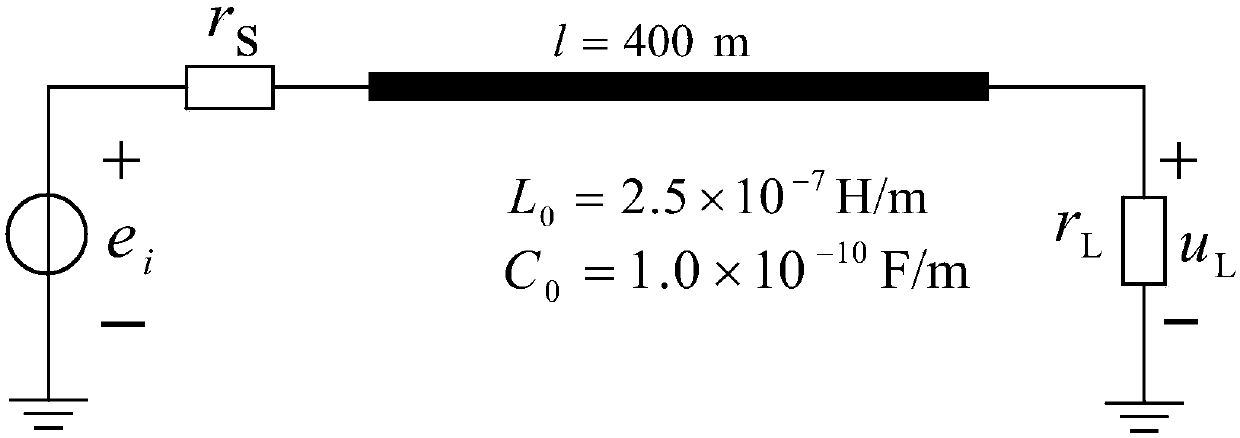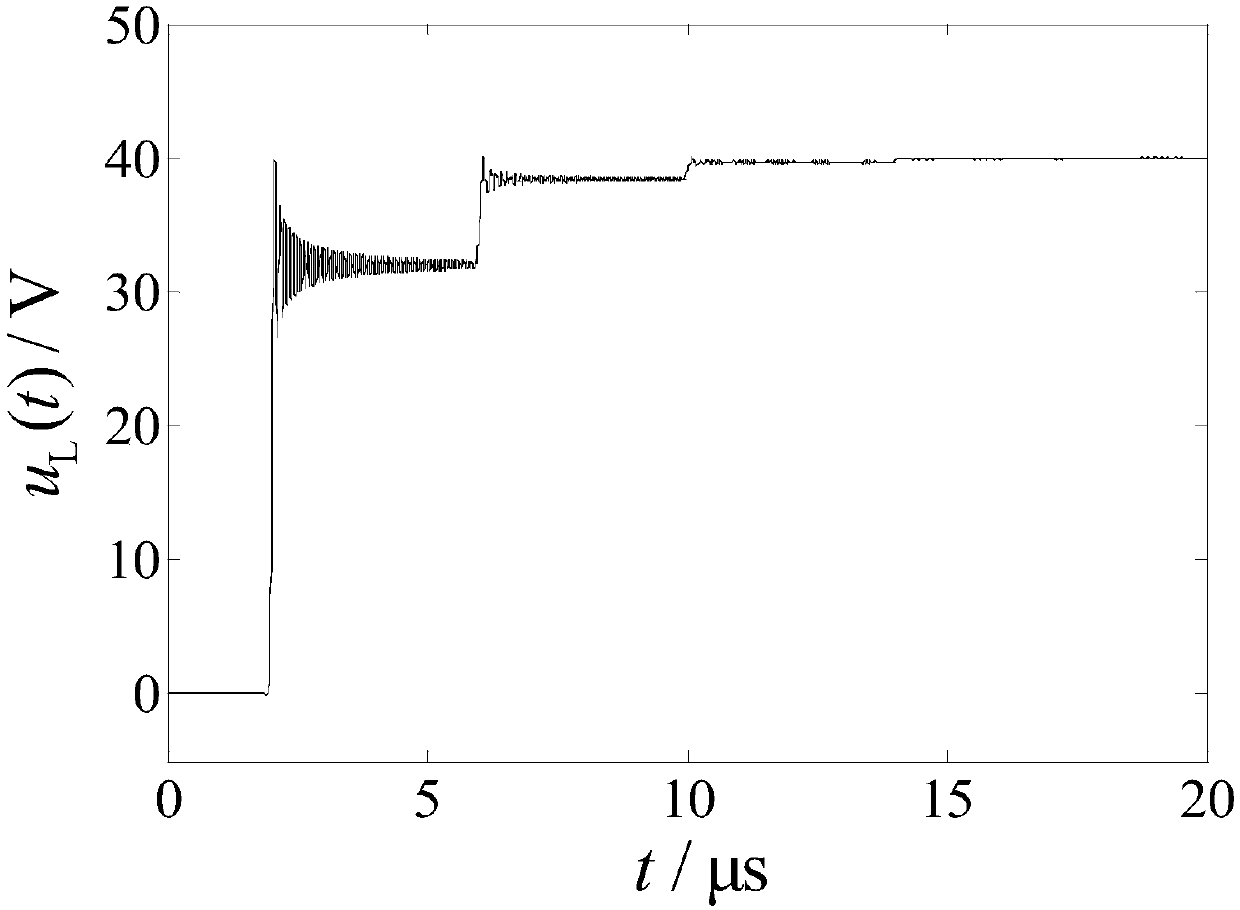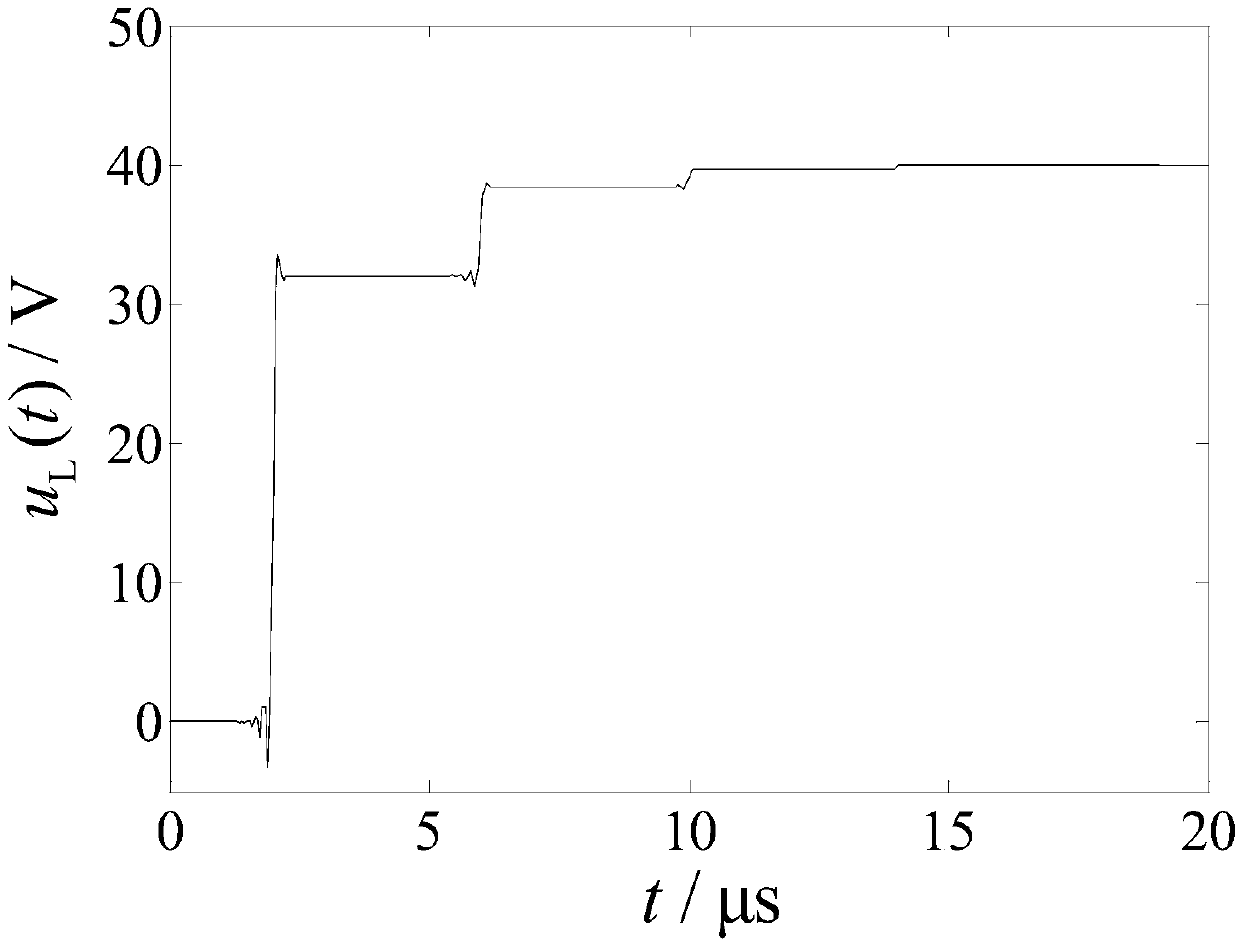Electromagnetic transient numerical computation method based on 3-step 4-order implicit Taylor series method
A first-order Taylor series and Taylor series technology, applied in the field of electromagnetic transient numerical calculation based on the 3-step 4-order implicit Taylor series method, can solve the problem that sudden changes are difficult to be detected, and avoid numerical oscillation problems , improve computational efficiency, and have strong numerical stability
- Summary
- Abstract
- Description
- Claims
- Application Information
AI Technical Summary
Problems solved by technology
Method used
Image
Examples
Embodiment Construction
[0052]The actual process of the electromagnetic transient numerical calculation method based on the 3-step 4-order implicit Taylor series method proposed by the present invention is basically the same as that of the traditional electromagnetic transient numerical calculation method. The difference is mainly the numerical integration in step 4 The scoring methods used are different.
[0053] by Figure 4 The shown single-phase power frequency uniform long transmission line is an example of the electromagnetic transient simulation calculation of no-load closing under different initial phase angles. The specific implementation steps of the present invention are summarized as follows:
[0054] 1): Input the initialization data, establish the differential equations of each component of the system, and form the basic mathematical model of electromagnetic transient numerical calculation:
[0055] well known, used to describe Figure 4 The mathematical model of the electromagnetic t...
PUM
 Login to View More
Login to View More Abstract
Description
Claims
Application Information
 Login to View More
Login to View More - R&D
- Intellectual Property
- Life Sciences
- Materials
- Tech Scout
- Unparalleled Data Quality
- Higher Quality Content
- 60% Fewer Hallucinations
Browse by: Latest US Patents, China's latest patents, Technical Efficacy Thesaurus, Application Domain, Technology Topic, Popular Technical Reports.
© 2025 PatSnap. All rights reserved.Legal|Privacy policy|Modern Slavery Act Transparency Statement|Sitemap|About US| Contact US: help@patsnap.com



